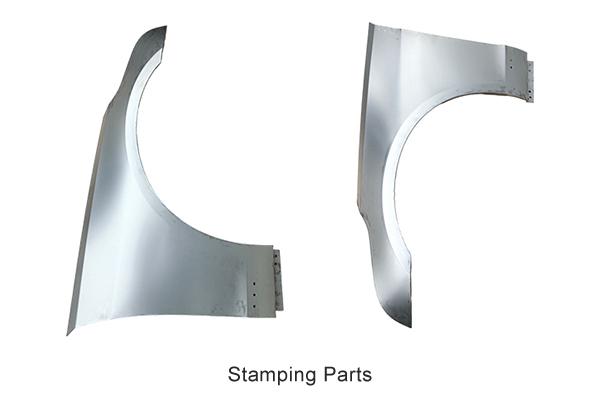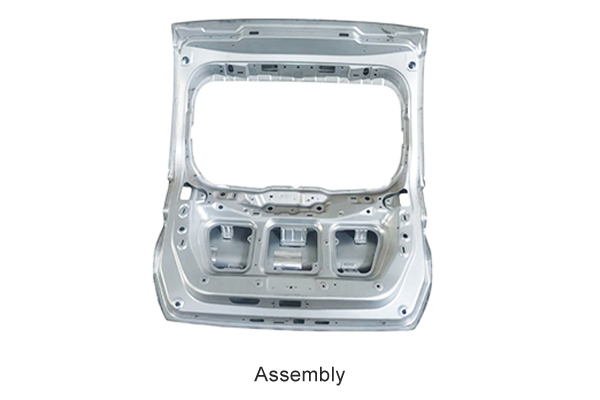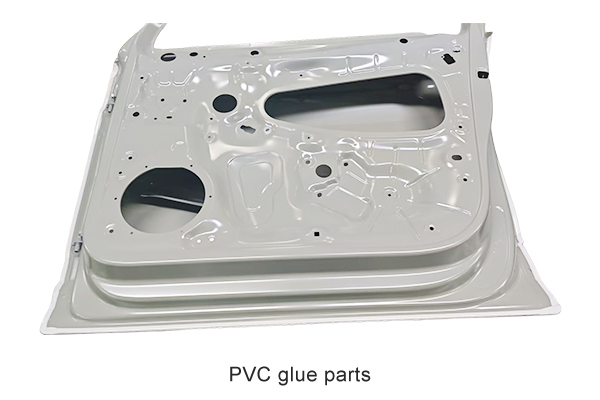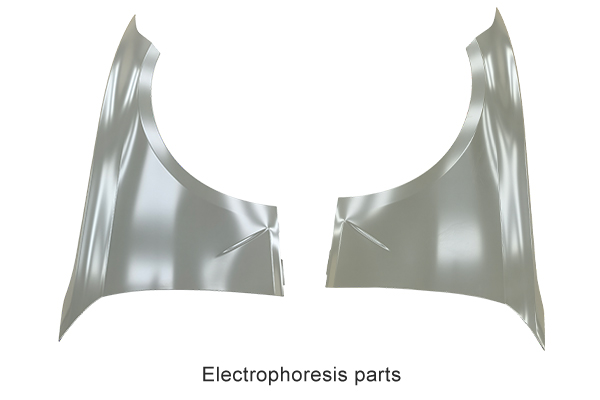How can the durability of automotive stamping parts under fatigue loads be improved?
Release Time : 2025-10-08
During vehicle operation, stamped components such as body structures, suspension brackets, and chassis crossmembers are subjected to constant alternating loads, vibration, and complex stress cycles. These components are prone to microcracks due to fatigue accumulation, ultimately leading to fracture and failure. Fatigue performance is directly related to the safety, reliability, and service life of the entire vehicle. Therefore, improving the durability of automotive stamping parts under fatigue loads has become a core issue in automotive manufacturing and materials engineering. The modern automotive industry systematically improves the fatigue resistance of stamping parts through a multi-faceted approach, including material selection, process optimization, structural design, and surface enhancement.
1. High-strength and tough materials lay the foundation for fatigue performance
Material is the fundamental determinant of fatigue life. Traditional low-carbon steel offers good formability, but its strength and fatigue limit are relatively low. Today, advanced high-strength steels, dual-phase steels, and transformation-induced plasticity steels are widely used in critical stamping parts. These materials not only offer high strength but also excellent ductility and energy absorption capacity, effectively suppressing crack initiation under alternating stresses. At the same time, internal grain refinement, inclusion control, and a uniform microstructure can significantly reduce stress concentration sources and prolong fatigue crack propagation cycles.
2. Optimizing the Stamping Process to Reduce Internal Defects
Process parameters during stamping directly impact part internal quality. Excessive forming speed, inappropriate blank holder force, or insufficient lubrication can easily lead to localized thinning, microcracks, or residual stress concentrations, which can become the starting point of fatigue failure. Preemptive optimization of drawbead layout, blank holder force curve, and die clearance through CAE simulation can ensure uniform material flow and avoid localized excessive stretching. Furthermore, employing multi-step forming or warm stamping processes can reduce springback and residual stresses, improve part geometric accuracy and internal integrity, and eliminate fatigue weaknesses at the source.
3. Structural Design to Avoid Stress Concentrations
The geometry of stamped parts significantly influences fatigue performance. Sharp corners, sudden changes in hole edges, and sudden changes in cross-section are prone to high stress concentrations, accelerating fatigue crack initiation. Modern designs commonly employ optimization measures such as large radius transitions, tapered cross-sections, and stress relief holes to smoother load transfer. For example, adding flanges or ribs around the control arm mounting holes not only increases rigidity but also disperses stress peaks. This "fatigue resistance by design" philosophy embeds durability into the product's DNA.
4. Surface treatment and strengthening technologies delay crack propagation
Even with optimized materials and structures, the surface remains the most vulnerable location for fatigue cracks. Therefore, surface strengthening is a key approach. Shot peening uses high-velocity projectiles to impact the component surface, creating a compressive stress layer that effectively inhibits surface microcrack propagation. Laser shock peening creates a deeper residual compressive stress layer and is suitable for high-stress areas. Furthermore, phosphating or passivation treatments before electrophoretic coating not only provide corrosion protection but also seal surface micropores, reducing the risk of corrosion fatigue.
5. Precision testing and life prediction ensure reliability
During the mass production phase, fatigue performance of key stamping parts is verified through X-ray residual stress analysis, ultrasonic testing, and fatigue bench testing. Combining real-vehicle roadmaps with digital twin technology, a fatigue life prediction model is developed, enabling a shift from trial-and-error verification to precision design. This not only shortens development cycles but also ensures that every stamping part possesses sufficient safety margins under real-world operating conditions.
In summary, improving the durability of automotive stamping parts under fatigue loads is a systematic project encompassing materials, processes, design, and testing. By integrating multiple technologies and collaborating across the entire supply chain, modern stamping parts achieve higher strength, longer lifespan, and enhanced reliability while remaining lightweight, providing a solid barrier to safe driving.
1. High-strength and tough materials lay the foundation for fatigue performance
Material is the fundamental determinant of fatigue life. Traditional low-carbon steel offers good formability, but its strength and fatigue limit are relatively low. Today, advanced high-strength steels, dual-phase steels, and transformation-induced plasticity steels are widely used in critical stamping parts. These materials not only offer high strength but also excellent ductility and energy absorption capacity, effectively suppressing crack initiation under alternating stresses. At the same time, internal grain refinement, inclusion control, and a uniform microstructure can significantly reduce stress concentration sources and prolong fatigue crack propagation cycles.
2. Optimizing the Stamping Process to Reduce Internal Defects
Process parameters during stamping directly impact part internal quality. Excessive forming speed, inappropriate blank holder force, or insufficient lubrication can easily lead to localized thinning, microcracks, or residual stress concentrations, which can become the starting point of fatigue failure. Preemptive optimization of drawbead layout, blank holder force curve, and die clearance through CAE simulation can ensure uniform material flow and avoid localized excessive stretching. Furthermore, employing multi-step forming or warm stamping processes can reduce springback and residual stresses, improve part geometric accuracy and internal integrity, and eliminate fatigue weaknesses at the source.
3. Structural Design to Avoid Stress Concentrations
The geometry of stamped parts significantly influences fatigue performance. Sharp corners, sudden changes in hole edges, and sudden changes in cross-section are prone to high stress concentrations, accelerating fatigue crack initiation. Modern designs commonly employ optimization measures such as large radius transitions, tapered cross-sections, and stress relief holes to smoother load transfer. For example, adding flanges or ribs around the control arm mounting holes not only increases rigidity but also disperses stress peaks. This "fatigue resistance by design" philosophy embeds durability into the product's DNA.
4. Surface treatment and strengthening technologies delay crack propagation
Even with optimized materials and structures, the surface remains the most vulnerable location for fatigue cracks. Therefore, surface strengthening is a key approach. Shot peening uses high-velocity projectiles to impact the component surface, creating a compressive stress layer that effectively inhibits surface microcrack propagation. Laser shock peening creates a deeper residual compressive stress layer and is suitable for high-stress areas. Furthermore, phosphating or passivation treatments before electrophoretic coating not only provide corrosion protection but also seal surface micropores, reducing the risk of corrosion fatigue.
5. Precision testing and life prediction ensure reliability
During the mass production phase, fatigue performance of key stamping parts is verified through X-ray residual stress analysis, ultrasonic testing, and fatigue bench testing. Combining real-vehicle roadmaps with digital twin technology, a fatigue life prediction model is developed, enabling a shift from trial-and-error verification to precision design. This not only shortens development cycles but also ensures that every stamping part possesses sufficient safety margins under real-world operating conditions.
In summary, improving the durability of automotive stamping parts under fatigue loads is a systematic project encompassing materials, processes, design, and testing. By integrating multiple technologies and collaborating across the entire supply chain, modern stamping parts achieve higher strength, longer lifespan, and enhanced reliability while remaining lightweight, providing a solid barrier to safe driving.








